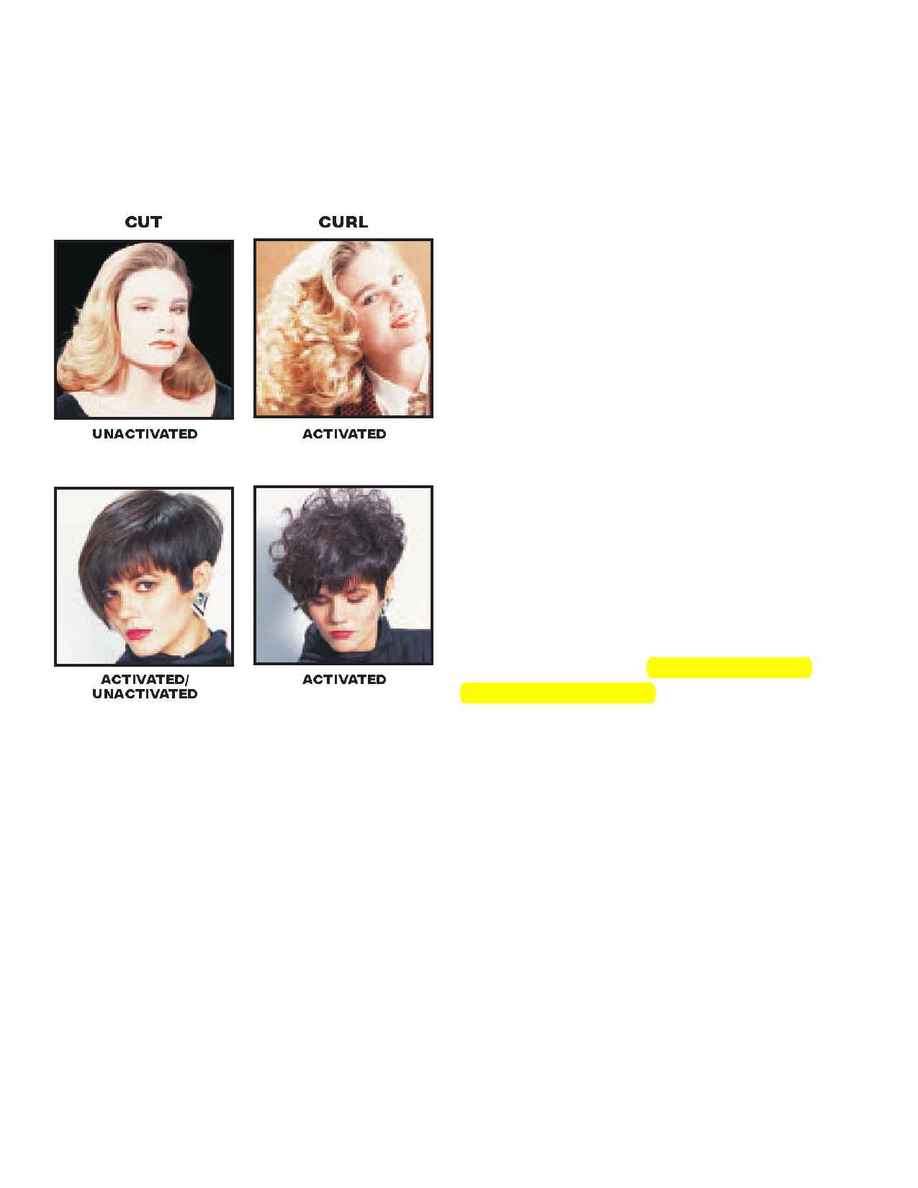
Hair Texture
Hair texture refers to the surface appearance or feel of the hair as well as the diameter of the hair
strand itself. Texture can be described as either unactivated (having a smooth and unbroken
surface) or activated (having a rough surface). It can also be described as fine, medium or coarse.
With unactivated styles you will find no hair ends
exposed on the surface. The hair is often straight
and cut as a blunt line. With activated styles you
will see a rough surface and lots of movement.
Activation is created either through curls or when
the hair ends are exposed on the surface, such as
with hair that is layered.
The surface appearance of the hair can be altered
with a variety of salon services, such as cutting the
hair blunt or in layers, perming, relaxing, as well as
with different finishing techniques or products.
The texture of the hair itself (the hair's diameter)
will determine which style will work best for your
client. Hair with fine texture is usually easy to style
but the hair collapses faster. Coarse hair is hard to
style at first, but when done properly, the style lasts
for a longer period of time. Curly, coarse hair tends
to create a wider silhouette.
Hair Density
Density describes the amount of hair per square inch on the scalp and is usually referred to as light,
medium or heavy (or thin, medium or thick). Hair density will determine the feasibility of certain
hairstyles. For example, clients with light density generally won't have enough fullness for longer
designs that go past the shoulders. Client's with heavy density hair generally won't look as good
with curly perms or feel comfortable with upswept hair because of the additional weight. The
amount of volume you are able to achieve in a hairstyle often depends on the density of the hair.
Another factor to consider with hair density is the use of styling products. Styling products offer-
ing manageability, lasting power and conditioning effects can all supplement varying degrees of hair
density. The styling product label usually indicates appropriate usage and hold factor for various
hair types. You may need to consider this hold factor when attempting to match the right product
with the desired volume. For instance, thick hair may require a heavier styling product for better
control. Thin density hair, on the other hand, may require a lighter styling product that won't weigh
down the hair while providing volume and mobility.
236
SALON FUNDAMENTALS
CUT
CURL
UNACTIVATED
ACTIVATED
ACTIVATED/
UNACTIVATED
ACTIVATED
